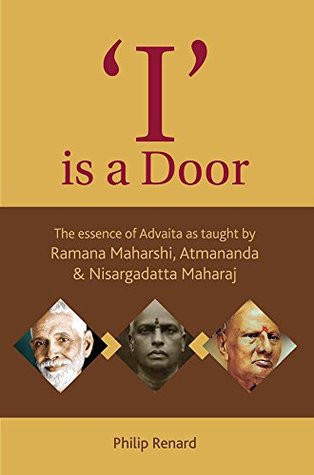More on this book
Kindle Notes & Highlights
'I' is a Door: The essence of Advaita as taught by Ramana Maharshi, Atmananda & Nisargadatta Maharaj
A principal characteristic of the ego is the attachment to the opinions about oneself.
The main difference, one could say, in the case of the ‘gross’ ego it is others that bother you and are bothered by you, whereas in the case of this subtle ‘I’ it is you being bothered by yourself.
Both Buddhists and Vedantists agree that this subtle ‘I’ should be given up if you want liberation, but disagree about the terminology and how belief in this ‘I’ can be annihilated.
Dzogchen, the Kunjed Gyalpo, it is stated: “I, the creativity of the universe, pure and total presence, am the real heart of all spiritual pursuits”; and “Because all phenomena are none other than me, I, the all-creating one, am the decisive experience of everything.”2
On his question to be allowed to hear the name of God, Moses (who has been acknowledged as a religious leader and prophet by Jews as well as Christians and Muslims) received the answer: “I am that I am (Eyeh Asher Eyeh).”3
Seeing that you are ‘That’, Absolute Awareness, was the only thing that mattered to him. He considered the rest as being needless philosophy.
“Vedanta is, strictly speaking, the fulfilment of all religions”; and “Vedanta is really a spiritual atom bomb, and it is no wonder that intellectuals tremble to approach it.”13
These three teachers have shown clearly that true Advaita, true nondualism, is not a path of knowledge or philosophy, but a path without methods, a ‘pathless’ path of liberation, an invitation to go nowhere.
‘I’ is that which is always present, which turns out to be the entrance to Truth. The entrance will never be anywhere else, it doesn’t need to be searched. You don’t have to go anywhere to experience ‘I’. Wherever you go, you are already there. ‘I’ is already there. ‘I’ is a door, and it is always open.
the tendency of the ‘I’ to identify itself with objects. That is exactly the mistake.
What is associated with what? What or who is making this mistake? Ramana Maharshi repeatedly speaks about the association as being a ‘knot’ (granthi), the ‘knot in the Heart’.
He often expressed himself in a way as if repeating the words of Shankara and Sureshvara.
“Pure consciousness and deep peace are your real nature. Having understood this in the right manner, you can well give up the use of the words ‘Consciousness’ and ‘Happiness’ and invariably use ‘I’ to denote the Reality. Don’t be satisfied with only reducing objects into Consciousness. Don’t stop there. Reduce them further into the ‘I’-Principle. So also reduce all feelings into pure Happiness, and then reduce them further into the ‘I’-Principle.”1
Although Atmananda loved to use words like Consciousness and Happiness in order to refer to the Ultimate, a quote like this shows that ultimately he preferred the term ‘I’-Principle (he once even said that compared to the ‘I’-Principle the word Consciousness may be called theory!2). He did so because he considered that the word ‘I’ has the least chance of being mistaken. Everything that can be perceived is liable to mistakes, however that which can be called ‘yourself’, that which cannot be perceived, ‘I’, cannot cause any mistaking.3 He considered the ‘I’-Principle to be everybody’s true
...more
With expressions like ‘in itself’ and ‘as such’ language stops short. Here language arrives at its limits. Something is referring to itself.
For instance a term like ‘the essence’ can suggest the presence of a tiny ‘being’ or ‘core’ within a more coarse form. As if you might discover something’s essence by enlarging it more and more using a microscope, continuously looking to what is inside the core. Something of this suggestion repeatedly arises in popular commentaries on the famous ‘You Are That’ passages in the Chandogya Upanishad in which Uddalaka teaches his son, for instance by splitting a fruit further and further.
“Space (Akasha), though not perceptible to the senses, is certainly conceivable by the mind. So it is really objective in nature. If we take out of Space this last taint of objectivity, it ceases to be dead and inert, becomes self-luminous, and it immediately shines as its background – the Reality.”6
The so-called ego too, is not an enemy; on the contrary, Atmananda said it is a help: “Even the much despised ego is a great help to the realization of the Truth. The presence of the ego in man, though in a distorted form, is infinitely better than the absence of it, as for example in a tree”; and “It is the whole ego that seeks liberation and strives for it. When it is directed towards the ultimate Reality, the material part automatically drops away and the Consciousness part alone remains over as the real ‘I’-Principle. This is liberation.”


